Multimodal Spatial Profiling Reveals Immune Suppression and Microenvironment Remodeling in Fallopian Tube Precursors to High-Grade Serous Ovarian Carcinoma
- PMID: 39704522
- PMCID: PMC12130810
- DOI: 10.1158/2159-8290.CD-24-1366
Multimodal Spatial Profiling Reveals Immune Suppression and Microenvironment Remodeling in Fallopian Tube Precursors to High-Grade Serous Ovarian Carcinoma
Abstract
High-grade serous ovarian cancer (HGSOC) originates from fallopian tube (FT) precursors. However, the molecular changes that occur as precancerous lesions progress to HGSOC are not well understood. To address this, we integrated high-plex imaging and spatial transcriptomics to analyze human tissue samples at different stages of HGSOC development, including p53 signatures, serous tubal intraepithelial carcinomas (STIC), and invasive HGSOC. Our findings reveal immune modulating mechanisms within precursor epithelium, characterized by chromosomal instability, persistent IFN signaling, and dysregulated innate and adaptive immunity. FT precursors display elevated expression of MHC class I, including HLA-E, and IFN-stimulated genes, typically linked to later-stage tumorigenesis. These molecular alterations coincide with progressive shifts in the tumor microenvironment, transitioning from immune surveillance in early STICs to immune suppression in advanced STICs and cancer. These insights identify potential biomarkers and therapeutic targets for HGSOC interception and clarify the molecular transitions from precancer to cancer.
Significance: This study maps the immune response in FT precursors of HGSOC, highlighting localized IFN signaling, chromosomal instability, and competing immune surveillance and suppression along the progression axis. It provides an explorable public spatial profiling atlas for investigating precancer mechanisms, biomarkers, and early detection and interception strategies. See related commentary by Recouvreux and Orsulic, p. 1093.
©2024 The Authors; Published by the American Association for Cancer Research.
Conflict of interest statement
Y.-A. Chen is a consultant for RareCyte. J.R. Heath reports grants from the NCI, Andy Hill Care Fund, and the Paul Allen Foundation during the conduct of the study, as well as nonfinancial support from AtlasXomics outside the submitted work. C.W. Drescher reports grants from the Gray Foundation and Canary Foundation during the conduct of the study. P.K. Sorger reports grants and personal fees from RareCyte Inc., personal fees from Glencoe Inc., and personal fees from NanoString/Bruker during the conduct of the study, as well as personal fees from Merck and Montai Inc. outside the submitted work. R. Drapkin reports personal fees from Repare Therapeutics outside the submitted work. S. Santagata reports personal fees from Roche and Novartis and grants from Merck outside the submitted work. No disclosures were reported by the other authors.
Figures
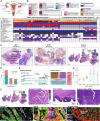
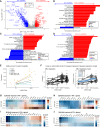
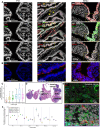
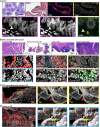
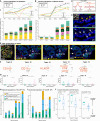
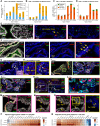
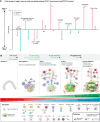
Update of
-
Multimodal Spatial Profiling Reveals Immune Suppression and Microenvironment Remodeling in Fallopian Tube Precursors to High-Grade Serous Ovarian Carcinoma.bioRxiv [Preprint]. 2024 Sep 27:2024.09.25.615007. doi: 10.1101/2024.09.25.615007. bioRxiv. 2024. Update in: Cancer Discov. 2025 Jun 3;15(6):1180-1202. doi: 10.1158/2159-8290.CD-24-1366. PMID: 39386723 Free PMC article. Updated. Preprint.
References
-
- Bray F, Laversanne M, Sung H, Ferlay J, Siegel RL, Soerjomataram I, et al. . Global cancer statistics 2022: GLOBOCAN estimates of incidence and mortality worldwide for 36 cancers in 185 countries. CA Cancer J Clin 2024;74:229–63. - PubMed
-
- Lee Y, Miron A, Drapkin R, Nucci MR, Medeiros F, Saleemuddin A, et al. . A candidate precursor to serous carcinoma that originates in the distal fallopian tube. J Pathol 2007;211:26–35. - PubMed
-
- Medeiros F, Muto MG, Lee Y, Elvin JA, Callahan MJ, Feltmate C, et al. . The tubal fimbria is a preferred site for early adenocarcinoma in women with familial ovarian cancer syndrome. Am J Surg Pathol 2006;30:230–6. - PubMed
MeSH terms
Substances
Grants and funding
- Program for Interdisciplinary Neuroscience (PIN)
- Bridge Project between the Koch Institute at MIT and DC/HCC
- U01 CA284207/CA/NCI NIH HHS/United States
- Carl H. Goldsmith Ovarian Cancer Translational Research Fund
- R50-CA274277/National Cancer Institute (NCI)
- Canary Foundation (THE CANARY FUND)
- P30 CA008748/CA/NCI NIH HHS/United States
- P50 CA228991/CA/NCI NIH HHS/United States
- U54-CA268072/Division of Cancer Prevention, National Cancer Institute (DCP, NCI)
- U01-CA284207/National Cancer Institute (NCI)
- Gray Foundation
- W81XWH-22-1-0852/U.S. Department of Defense (DOD)
- Honorable Tina Brozman Foundation (Tina's Wish)
- P50-CA228991/Division of Cancer Prevention, National Cancer Institute (DCP, NCI)
- U54 CA268072/CA/NCI NIH HHS/United States
- BWH President's Scholar award
- R50 CA274277/CA/NCI NIH HHS/United States
- U2C-CA233262/National Cancer Institute (NCI)
- Ludwig Center at Harvard (Ludwig Center)
- Dr. Miriam and Sheldon G. Adelson Medical Research Foundation (AMRF)
- The Mike and Patti Hennessy Foundation
LinkOut - more resources
Full Text Sources
Medical
Research Materials
Miscellaneous

